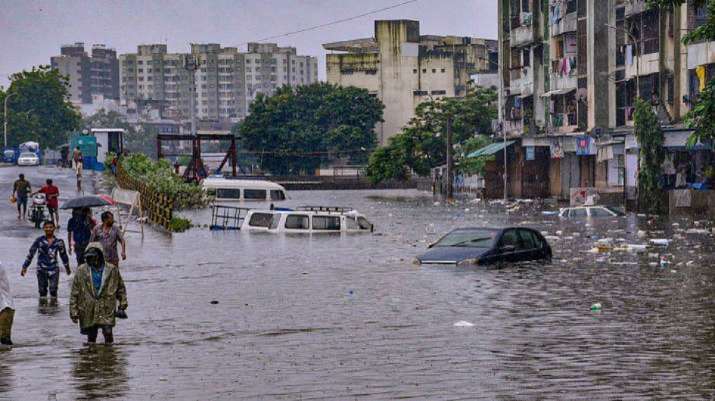How to Face Flood Damages
If you’re a flood victim, the first thing to do is to gather as much information as possible. You can get this information from credible sources such as local news, state public health agencies, or police departments. The next step is to stay calm, follow the directions of rescue personnel, and limit your exposure to news reports about flood damage. Finally, if possible, contact family and friends for emotional support. Helping others can help you get through tough times.
Preventing flooding
There are steps that homeowners can take to decrease the risk of flooding in their homes. For instance, they should elevate electrical panels, water heaters, washers, and dryers, install backwater prevention valves, and place interior floodwalls around utilities. They should also move essential items to higher floors and keep sandbags, shovels, and other flood-proofing materials in a secure place. Taking these steps can help them avoid the costs associated with flooded basements. In addition, flood insurance coverage is another way to minimize damage.
In addition to damaging property, flooding can harm human life. Rapid water runoff can damage vegetation and kill animals, destroying their habitats. Moreover, high and prolonged floods may disrupt highways and other transportation systems. They can also interfere with agriculture and other economic land uses. Furthermore, flooding can cause structural damage to bridge pillars and other buildings. It can also disrupt the functioning of hydroelectric power plants.
Preparing for flooding
Before flooding strikes, it is essential to take some steps to protect your property and possessions. For example, remove all rugs and curtains in flood-prone areas, turn off utilities, and secure air bricks around windows and doors. In addition, it would help to put up flood barriers in vulnerable areas to prevent floodwater from entering your home.
It is important to stay indoors during flooding and call emergency services if necessary. Floodwaters can be contaminated with chemicals and sewage. If possible, move all valuable items to the highest levels of your home.
Recovering from flood damage
Flood damage can be devastating, but there are ways to minimize the damage and get back to normal. The first step is to reduce moisture in your home and property. You can do this by opening windows and using a dehumidifier or fans. Another helpful tip is to use a central heating system. It will help you keep your home cooler, and it will also prevent mold growth. Using a sump pump, you should also keep the ground from becoming saturated. You can also use a wet-dry shop vac to remove water from floors.
If you search for “flood restoration company near me best tips”, you will find that once you have cleaned up the area, start assessing your home for structural damage. Make sure to put on personal protective equipment and disinfect all surfaces. Floodwater can carry contaminants such as bacteria and viruses. If you must use water in the area, wash it thoroughly with soap and throw away any contaminated food.
Dealing with floodwater
Flood water damage can destroy homes and possessions. In addition, floodwaters are contaminated with sewage and chemicals and pose a severe health risk. Aside from causing extensive physical damage, floodwaters can also be dangerous, posing the threat of gas leaks and live power lines. Therefore, if you notice flooding or cracks in your home, it’s best to contact a flood restoration company near me as quickly as possible.
After the flood, the first thing to do is to remove damaged items, such as carpeting, from the home. Then, crack windows, so air can circulate and help dry the house. Next, clean and disinfect wet surfaces, such as furniture and floors. While cleaning, wear protective gear to protect yourself from exposure to flood water.
Avoiding flood dangers
During a flood, avoiding flood dangers can save your life. The number one cause of flood fatalities is drowning, most of which occur during flash floods. The first step to avoiding drowning is to prevent standing water. When crossing a flooded street, use a stick or pole to test the ground. Avoiding roads with electrical wires or road barriers is also a good idea. The water that covers these obstructions can carry an electrical current.
Floodwaters often contain chemicals and sewage that can be dangerous to people. In addition, they can have floating metal and glass. They may also include downed power lines. Additionally, driving through floodwaters is extremely dangerous. Even six inches of water can cause a vehicle to lose control. Two feet of water could quickly sweep away a car.
Dealing with flood damage after a leak
Dealing with flood damage after a leak can be a stressful experience, but there are several steps you can take to minimize the amount of damage done to your property. The first step is to identify the source of the leak. Professionals, such as a plumber, roofer, or foundation expert, can help you with this. Once you have identified the source of the leak, you need to work on drying the affected areas. Then, you should remove wet furnishings, carpets, and appliances. It would help if you also opened windows to remove excess moisture. Lastly, you will need to repair or replace any damaged walls. It would help if you also considered using a dehumidifier to remove excess water in the area.
You may be worried about mold and other secondary damage caused by floodwater. While mold does not cause immediate health problems, the longer you wait to clean up the area, the greater the chance for mold growth. Once the site has been dried, you should treat it with a bleach solution. For further information, you can read FEMA’s guidelines on dealing with mold.


Comments are closed.